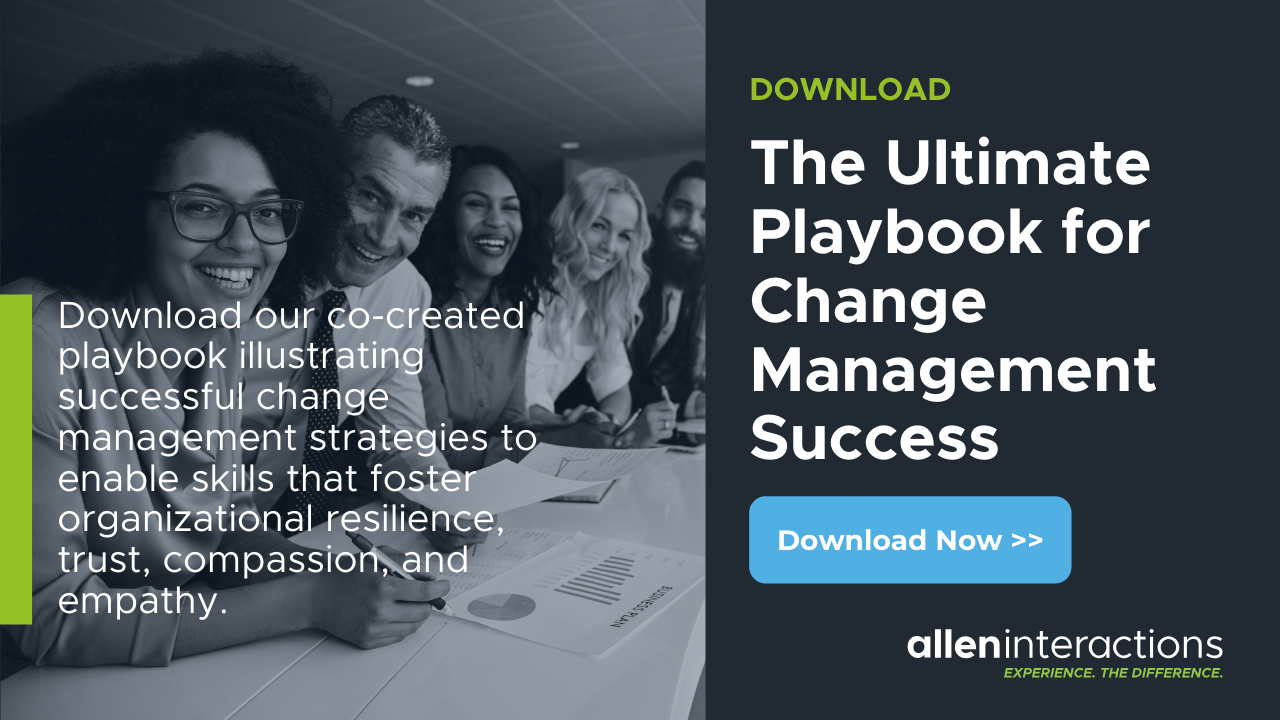Blog
The Right Way to "Blend" E-Learning
In the context of education, blended learning usually means moving some of the teaching/learning work from the human teacher to some kind of ...


What is Blended Learning?
By Carly Baker-Rice | September 12, 2019 | Custom Learning | 0 Comments
In the context of education, blended learning usually means moving some of the teaching/learning work from the human teacher to some kind of technology, used in or out of the classroom. In the training context, the discussion usually occurs when looking for ways to offload some curriculum from Instructor-led (ILT) or virtual-instructor-led training (VILT) into eLearning. As such, these conversations are often laden to the point of feeling loaded with a lot of baggage around a dichotomy between human teachers and machine teachers.
No matter your stakes in that debate, we can all agree there are important histories, concerns, and sources of creativity in that polarity. However, it also gets in the way of a richer, more practical, and more effective way of conceiving of a blended approach.
Before I dig into a few reframes on this, I want to emphasize that the business case and legitimate learning needs that call for an assessment and perhaps transformation of ILT curriculum into elearning or a blended approach does not bore me in the least! In fact, it’s something I really enjoy helping clients with – from initial consideration (should we?), through design and implementation. So, if that’s what you came looking for, watch out for another post from me on exactly that or get in touch!
Reframe 1: Blended = Bringing ingredients together for the right overall effect
We’re talking cooking here, folks! Yum. I sometimes feel lucky being a learning professional who did not come from an education background, and this is one of those times. I know I enter this conversation without the baggage of some. It allows me look at the wide range of tools available (and always the spaces where new ones seem possible) and treat them all as equals, knowing each is powerful when used well.
Can you imagine cooking with just two ingredients? We would never. So why do we talk about blended learning as though it is the process of finding the balance between two things?
Exercise!
Ok, quick do: Take a piece of paper, pen, and 2 minutes to list as many modalities as you can imagine – don’t get too caught up in terminology or technicalities. A poster is a modality.
Whew! How did that feel? Are you feeling liberated and swimming in all the possibilities for using modalities you’re not using right now? Good!
Reframe 2: The human/machine dichotomy obscures the real and critical question: What is the right modality here?
When I survey the modality landscape, I’m not thinking about them. To me there are...kind of empty. I come to them with a sense of what I’m trying to achieve, and try on the ones that seem most fitting, test them out (rapid prototyping can occur for any modality – try it! Use pen and paper). I’m working backwards from the outcomes to the possible solutions, and then ultimately, selecting the most fitting solution – or solutions (more on that in a moment).
OK, one trick here. When I say “outcomes” I’m not really talking about a statement penned describing what the learner is doing from a social-science, observational distance. Not exactly. I’m imaging a learner getting their “aha!” moment towards a particular outcome and also what they have to do after that (again, more on that in a moment), and I use what I imagine about those moments in the learner to help inform the modality decision. You can read a blog post I wrote on uses of empathy.
As you survey your list of modalities do you see empty things, or are they all filled up with beliefs about “what they do best”?
Exercise!
Quick do: Instead of thinking about what they do best (the academics can worry about that), take a performance objective from something you’re working on and try on several modalities.
Then, just to stretch this skill, see if you can find a performance objective on your roster that is best learned on the job.
I know some of you will cry out that nothing is best learned on the job, but I possess such examples! They exist. So, try it on with some of your objectives and see what you come up with.
Reframe 3: Of timepoints and multiple modality realities
Second trick here, and it’s important. Rarely, and I mean very rarely, should a performance objective be treated with just one modality. And here’s the test case that proves my point: If you give a learner a piece of learning in any modality – and just one modality – and then they finish your training and go back to their job and then meet a situation when they need to do that thing, guess what? They have arrived at modality #2 whether you accounted for it in your design or not: on-the-job learning.
Join me for a moment as we remind ourselves that creation, retrieval, and mastery of any behavior, attitude or thinking happens over time. If you don’t plot that across at least a few timepoints, and thus likely a couple modalities, some, and maybe even most, of your learner’s learning is outside the scope of your design. While a lot of it always is, thinking from a rich, blended approach from the get-go is a great way to enforce what we know well but rarely practice: learners learn over time.
Exercise!
Quick do: You can probably guess what I’m going to say. Take a performance objective and map how you would address it across a few modalities, keeping the development of the learner in mind: from Aha!, to retrieval, to practice, to mastery.
See how different it feels to help them in more steps of this path?
Because the need to think in a blended way, for me, is a part of every project, I’ve started using different versions of charts and tables to very quickly sort performance needs and the development of each one into modality buckets. Each time it’s a little different, but it boils down to what I like to call “modality alignment.”
And I guess that’s my bottom line.
Blended learning isn’t about elearning + teacher. It’s about modality alignment.
About the Author: Carly Baker-Rice
Comments
Would you like to leave a comment?
Related Blog Posts

By: Carly Baker-Rice | Aug, 2015
Category: Custom Learning

Blog
Blended Learning: How to Select the Right Mix of Modalities
In the context of education, blended learning usually means moving some of the teaching/learning work from the human teacher to some kind of ...
By: Carly Baker-Rice | Jun, 2013
Category: Custom Learning, Strategic Consulting

Blog
Allen Interactions Recognized by eLearning Industry as a 2022 Top Content ...
In the context of education, blended learning usually means moving some of the teaching/learning work from the human teacher to some kind of ...
By: Carly Baker-Rice | Dec, 2021
Category: Custom Learning, News, Awards and Recognition


